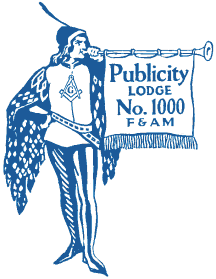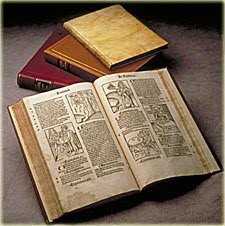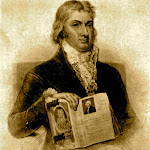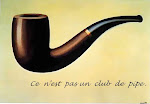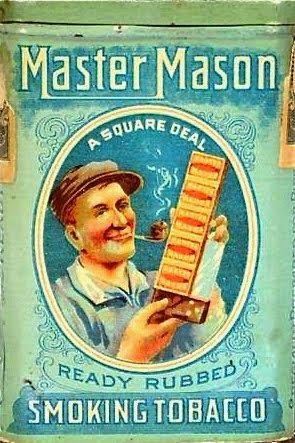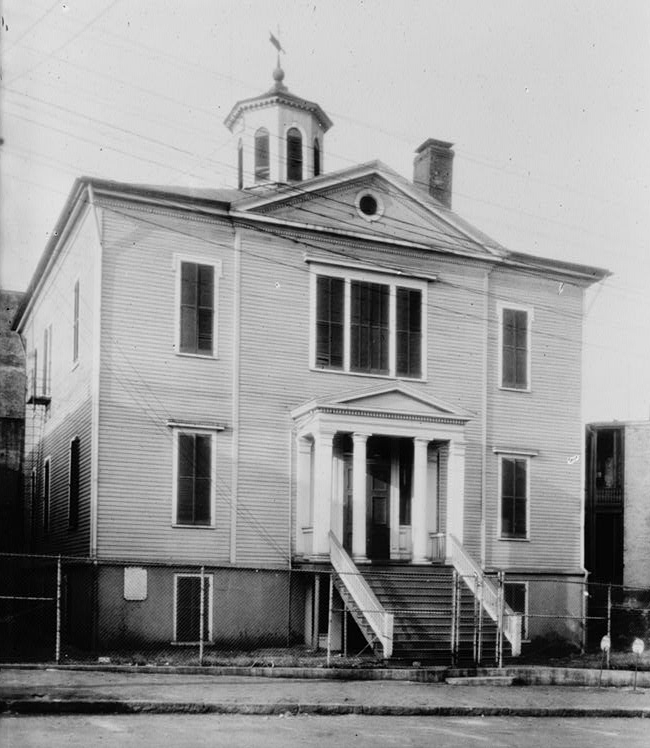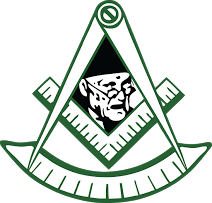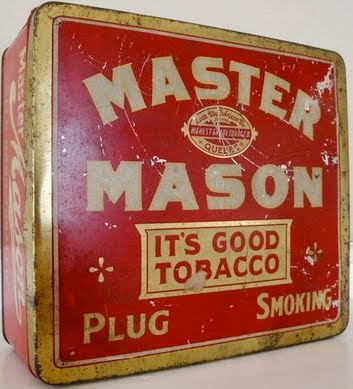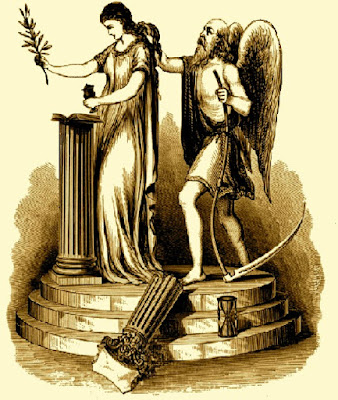Tuesday, June 30, 2020
‘Funded: On the Square board game’
Matthew & Michael Ltd. announced a few days ago that its board game On the Square has achieved full funding (plus a little more) in its Kickstarter campaign.
You can still show your support through Thursday.
Check them out all over social media, including Instagram, Discord, and much more.
If I’m not mistaken, the next issue of Scottish Rite Journal will feature mention of the endeavor too!
Monday, June 29, 2020
‘The Contemplative Builder channel’
Chuck Dunning set up a YouTube channel a few months ago to present discussion of the practical application of certain Masonic teachings.
Recent topics include “Masonry and Mental Health in the Time of COVID-19” and “Meditating with Blue Lodge Symbolism.”
We all enjoy learning about history and talking about philosophy and delving inside the rituals and symbols, but these videos illustrate ways to put into practice Masonic thinking that otherwise might remain only printed words to you. It’s a service very much needed in the Craft. Enjoy.
This talk is based on a piece Dunning wrote
for The Journal of the Masonic Society.
Sunday, June 28, 2020
‘Masonic Week 2021’
UPDATE: Masonic Week 2021 is canceled, and many events will be hosted via Zoom, including the Masonic Society’s event featuring MW Elias. More info to come.
 |
| MW Akram Elias |
The Masonic Society’s annual dinner-lecture will be hosted Friday, February 12, 2021. No word yet on the menu or dining fee (I probably will have both later in the summer) but, more importantly, our keynote speaker will be MW Bro. Akram Elias, Past Grand Master of the Grand Lodge of Washington, DC.
Masonic Week takes place at the Hyatt Regency Crystal City in Arlington, Virginia. It will run from Wednesday, February 10 through Sunday the 14th. (If you think your lady won’t appreciate the Operatives Brunch on Valentine’s Day, well you’re just wrong!) The website will have event registration, dinner reservation, and hotel booking information—again—probably later this summer.
You’ll see the schedule has been rearranged. The Grand College of Rites was bumped up to 1:30 on Friday, so I may just stand a chance of getting there this time. But the reason you’ll want to attend Masonic Week 2021 is the Masonic Society dinner.
MW Bro. Elias’ talk will be “Freemasonry in 2026: A Force for Good, or a Footnote in History?” He will challenge us to look five years into the future, to America’s semiquincentennial year, to candidly assess whether Freemasonry will be relevant, and what we, as Free and Accepted Masons, can do today to anticipate the future we deserve.
We’re all having a hell of a 2020 thus far, and some strategic thinking most definitely is in order.
MW Elias served as Grand Master in 2008, capping a most effective career in Masonic leadership. If you want to know what he is up to these days, check out the Masonic Legacy Society.
So, mark your calendars and plan to be with us at the Hyatt Regency on Friday the 12th at seven o’clock. All Masons, our ladies, and friends of Freemasonry are welcome to enjoy a terrific meal and great company. Everyone says it is the social event of Masonic Week, and who am I to argue? I’m lucky they let me in.
Saturday, June 27, 2020
‘NBC News: Trump requests return of Pike statue’
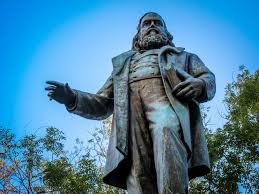 |
| Courtesy Washington Post |
NBC News reported the other day that President Donald Trump asked the U.S. Department of the Interior to restore the historic statue of Albert Pike to Judiciary Square in the nation’s capital.
The self-described news network did not provide any attribution to its claim, and it did say the White House did not “provide a comment” on the subject, so who really knows if this is rooted in even a whiff of reality? But, reviewing the first half of 2020, I can see anything is possible.
As you may know, this statue, donated by Scottish Rite Freemasons and erected in 1901, was pulled down, defaced, and burned last week.
▲▼▲▼▲▼▲▼▲▼▲▼
Days ago, I was accused in social media by Rev. Lovejoy, a Brother Mason and Methodist Minister in Iowa, of opposing the removal of “Confederate statues.” I am not. I find nothing wrong with removing memorials to historical persons’ seditious and otherwise anti-American misdeeds. (This Pike statue is no such thing.) There just has to be a legal process first.
Labels:
Albert Pike,
Donald Trump,
National Parks Service,
NBC
Friday, June 26, 2020
‘Livingston Library services update’
The Chancellor Robert R. Livingston Masonic Library of the Grand Lodge of New York has a way forward as circumstances change in the COVID-19 pandemic. The librarian disseminated the following information today:
Livingston Masonic
Library and Museum
Re-opening Procedures
Visits:
- The standard hours of the Library & Museum are 9 a.m. to 5 p.m., Monday through Friday.
- No walk-in visits by patrons or researchers. All visits are by appointment only.
- Patrons must wear a mask at all times when visiting the Library to return books.
- Patrons must use hand sanitizer when entering the Library, which will be available inside the front door.
- Every patron will write in the guest book the date of the visit, name, and contact information.
General Circulation/Research Procedures:
- The staff is limited, therefore it will take longer to answer genealogy and research requests. All genealogy and research requests should be sent via email either to Librarian Joseph Patzner or Director Alexander Vastola.
- Requests for books from patrons should be emailed either to the Librarian or the Director.
- Research Requests: Materials will be prepared, scanned, and emailed to patrons.
- Book Returns: If patrons want to return or borrow a book from the library in person, they should set up an appointment ahead of time.
- There will be a book drop located just outside the Library’s front door for patrons to return books in case some patrons decide to return their books outside of standard hours.
- Preferably, patrons who mail books should mail them directly to:
Livingston Masonic Library
71 West 23rd St., 14th Floor
New York, NY 10010
- For currently borrowed books, all late fees are waived and due dates for books are extended for the time being.
- Regarding Museum Artifacts: The museum staff will not show or send artifacts to Masonic Lodges or Masonic organizations until September 2020.
Masonic Reading Course:
- The staff is limited, therefore it will take longer to run the Masonic Reading Course.
- Patrons should hold onto the books they have borrowed until the Library fully re-opens. Once this happens, patrons should mail the books to the Library to minimize contact, but also will have the option to return books in-person.
- Reading Course Certificates will be mailed directly to patrons instead of to the staff officers since Masonic activities are still closed.
Donations to the Library & Museum:
- The Library & Museum will not accept donations of books or artifacts until September 2020.
Library Lecture Series:
- All future Library Lectures are to be determined, based on how New York City slowly reopens in the wake of the COVID-19 pandemic, and whether there is a COVID-19 resurgence in the Fall.
Wednesday, June 24, 2020
‘Weird Fact Wednesday: A Monument in Honor of a Great Artist’
Before I begin, happy 303rd anniversary!
Depending on where you are in the Masonic world, the Master Mason Degree ritual employed by your lodge might, or might not, include a quick discourse on the final resting place of our GMHA. I think the rituals lacking this explanation intentionally seek continuity with the overall point about the immortality of the soul, meaning the disposition of the body simply does not matter. The ritual of my lodge does include this bit of legendary history; I won’t quote that here, but instead will share the version found in the unauthenticated Duncan’s Ritual—which no regular lodge uses—even though my New York ritual has a better written telling of it. From Duncan’s monitorial text:
After prayer…the body was then carried to the Temple for a more decent burial, and was interred in due form.
The body of our Grand Master was buried three times: first, in the rubbish of the Temple; secondly, on the brow of a hill west of Mount Moriah; and, thirdly and lastly, as near the Sanctum Sanctorum, or Holy of Holies, of King Solomon’s Temple, as the Jewish law would permit; and Masonic tradition informs us that there was erected to his memory a Masonic monument, consisting of “a beautiful virgin, weeping over a broken column; before her was a book open; in her right hand a sprig of acacia, in her left an urn; behind her stands Time, unfolding and counting the, ringlets of her hair.”
The beautiful virgin weeping over the broken column denotes the unfinished state of the Temple, likewise the untimely death of our Grand Master, Hiram Abiff; the book open before her, that his virtues lay on perpetual record; the sprig of acacia in her right hand, the divinity of the body; the urn in her left, that his ashes were therein safely deposited, under the “Sanctum Sanctorum, or Holy of Holies,” of King Solomon’s Temple.
Time, unfolding the ringlets of her hair, denoted that time, patience, and perseverance accomplish all things.
Monuments are in the news lately, as statues and other public memorials have been defaced, smashed, toppled, and burned during many violent rampages across the United States and beyond. It’s not about the Confederacy or slavery or Black lives mattering. It’s about cultural revolution, which we can see plainly because plenty of the monuments targeted have nothing to do with the Confederacy. Statues of Abraham Lincoln, U.S. Grant, Miguel de Cervantes, and others have been ruined. Abolitionists, like John Greenleaf Whittier and Hans Christian Heg, have had their statues attacked. On May 31, which was the 123rd anniversary of its dedication, the Shaw Memorial, which memorializes the first African-American volunteer regiment of the U.S. Army in the Civil War, was vandalized with all kinds of graffiti by those claiming to be demanding justice for African-Americans, so don’t think for a minute this destruction has even a veneer of justice on it. It is about erasing history in a manner described by George Orwell in 1984.
But this edition of Weird Fact Wednesday concerns our monument found in certain MM° rituals. Why is it there?
The monument, as described in the drama, clearly would be an anachronism, as no such thing would have existed at that historical time and in that place. Even the book, as depicted in the monument, would not have been known then. So where did this symbol come from?
We don’t find it in Preston’s Illustrations, but being a Tiler myself, I am inclined to trust the judgment of Bro. Thomas Johnson, who served as Grand Tiler of the Grand Lodge of England when he published A Brief History of Freemasonry in 1782. Therein we find a “Design for a Monument, in Honor of a Great Artist.” This shows the three Great Lights, adorned with laurels, and an urn decorated with the letter G, with the sun and moon on the sides of the monument.
Two hundred years ago, long before Freemasons could obtain official—or other—ritual ciphers or monitors, there necessarily were competing forms of Masonic works spreading across the United States. Grand lodges had to investigate and determine for themselves which systems were most authentic and useful, which I think explains why some Third Degree rituals, but not others, include this monument discussion. One of the ritual systems to emerge in the early 19th century was that promulgated by Bro. John Barney of Vermont, who is credited with innovating the icon of the marble column and the weeping virgin and Father Time, with the open book, sprig of acacia, and urn.
No doubt you are wondering where Jeremy Cross, who I think deserves third billing with William Preston and Thomas Smith Webb for creating the rituals most of us Americans have today, fits into this. It seems Cross made that column into the Broken Column, denoting how one of the principal supports of Freemasonry has fallen.
Sunday, June 21, 2020
‘MRF postpones Detroit’
This evening, the Masonic Restoration Foundation announced it has postponed its Eleventh Annual Symposium, saying:
We have no alternative but to postpone the MRF Symposium for this year, until we can do what we do, in the way we are all accustomed to doing it.
When we are able to resume, we will pick up right from where we left off, and there is no better way to restart our collective soul than to continue with our plan to hold the event at the Detroit Masonic Temple. That’s why we’re calling this a postponement, and not a cancellation. We have faith in Detroit, and we appreciate the faith those good brethren have had in us.
If you’ve ever attended an MRF event, you know it is something special that cannot be on Zoom, and you understand why, so sit tight, and they will make it worth your while before long.
Saturday, June 20, 2020
‘DC’s Albert Pike statue is felled, burned’
 |
| Courtesy NBC4-Washington |
The soul hath its senses, like the body, that may be cultivated, enlarged, refined, as itself grows in stature and proportion; and he who cannot appreciate a fine painting or statue, a noble poem, a sweet harmony, a heroic thought, or a disinterested action, or to whom the wisdom of philosophy is but foolishness and babble, and the loftiest truths of less importance than the price of stocks or cotton, or the elevation of baseness to office, merely lives on the level of commonplace, and fitly prides himself upon that inferiority of the soul’s senses, which is the inferiority and imperfect development of the soul itself.
Albert Pike
Morals and Dogma
The above is excerpted from Albert Pike’s lecture in Morals and Dogma for the 5° of the Ancient and Accepted Scottish Rite of Freemasonry: the Perfect Master Degree. By “perfect,” this lecture intends another Masonic lesson in achieving equilibrium for the self and harmony in the world.
The adjective “perfect” that we use in the English language derives from the French word for “flawless” and “complete.” It is a coinage as apt for use by those engaged in the good work, square work of operative masonry as it is for those in the speculative art. Otto Jespersen, one of the great linguists, said:
The difference between the Preterit and the Perfect is in English observed more strictly than in the other languages possessing corresponding tenses. The Preterit refers to some time in the past without telling anything about the connection with the present moment, while the Perfect is a retrospective present, which connects a past occurrence with the present time, either as continued up to the present moment (inclusive time) or as having results or consequences bearing on the present moment.
Perfect, as in connecting past to the current moment.
 |
| Courtesy Shelton Herald |
Albert Pike was a complicated man. Yes, he served in the Confederate army for several months during the Civil War. He was, in fact, a general, until he resigned. Because of this brief military background the “news media” keep referring to his statue in Washington, DC as a Confederate statue. It was not. It was a monument erected by Scottish Rite Masons to honor Albert Pike the Freemason.
In Freemasonry, it was Albert Pike who provided Scottish Rite rituals to Prince Hall brethren so that they too could have Scottish Rite Masonry. It was he who eliminated the medieval religious bar in the Ancient and Accepted Scottish Rite so that Masons who are not Christian may advance to the Rose Croix Degree and beyond—and he did that about a century before the Northern Masonic Jurisdiction got around to emulating that example.
You will see all over the internet today libels about how Pike was a member—or even the founder—of the Klan. He was no such thing. You also will see the accusation that he owned slaves. I have no idea about that, but Pike was a lawyer who moved about the country; he was not a farmer on a plantation.
The mobs in the streets will not be appeased. They are not going to stop destroying historical symbols until there is no more memory of Fill in the Blank. Unchecked by civil authorities, the mobs will continue rampaging. Today’s violence may be against figures, real or imagined, of the Confederacy, but tomorrow it surely will be against the Founders of the United States and many, many, many others who contributed to the complex, but magnificent, history of this unparalleled society.
You destroy a people by obliterating their history.
Religious community mocked and marginalized? Check! The family unit
discredited and dispersed? Check! Symbols and traditions of common
identity rejected and renounced? Double Check! Education crimped to stunt
the human mind? Triple Check! And the mobs will continue erasing the
historical record itself until people won’t have a past they could protest.
“Who controls the past controls the future,” George Orwell instructed in 1984,
and “who controls the present controls the past.” Oh, that reminds me: They
will defeat and erase language also.
 |
| Courtesy WTOP |
Some history, from three years ago, here.
Wednesday, June 10, 2020
‘Shoemaker receives Washington honor’
It was thirty years ago this month when the Grand Lodge of Washington devised an honor to confer in recognition of distinguished, but discreet, service to the Masonic fraternity, and the newest recipient of the Bill Paul Horn Memorial Masonic Medal is Aaron Shoemaker!
The decoration is named for a past grand master of the Grand Lodge of Washington, but it is not necessary to be a Washington Mason to receive it. Aaron is from Missouri. Past honorees include Ernest Borgnine, Bob Davis, Matt Dupee, Dick Fletcher, Nat Granstein, Forrest Haggard, Tom Jackson, Joe Manning, and Ron Seale.
Aaron is a long-serving member of the Board of Directors of the Masonic Society, and is the Senior Grand Warden of the Grand Council of Allied Masonic Degrees of the USA. He is a Past Grand Chancellor of the Grand College of Rites. I’m going to stop there, because I honestly cannot remember all of his meritorious labors in Freemasonry. He and I go way back to the first years of this century in the Masonic Light group, and I met him for the first time in 2006, when the Rose Circle Research Foundation held its first symposium at my former lodge in New Jersey.
Congratulations, my friend!
Monday, June 8, 2020
‘Can’t go to lodge? Bring lodge to you.’
Development of On the Square, the game of gavels I’ve been telling you about, is gaining momentum. Lend your support to the creators’ Kickstarter campaign here.
Tomorrow night, some brethren of the Leeds Light Blues Club will play the game on their Twitch TV channel. Check that out here.
Sunday, June 7, 2020
‘Celebrate St. John Baptist Day!’
The George Washington Masonic National Memorial has something very special planned for us. From the publicity:
Wednesday, June 24 will mark the first Saint John’s Day since the COVID-19 pandemic began. Although we cannot gather in our lodges as preferred, we can enjoy an evening of high-toned fellowship and Masonic education. Brethren, prepare the libations of your choice for the ancient observance of Craft Freemasonry: the Feast Day of Saint John the Baptist!
To apply to be part of this event, take this survey, and
then pay the $5 admission via PayPal when it comes in your email.
‘Fuller’s Past Masters’
 |
| Courtesy Hospitality and Catering News |
I got all excited the other day when a Past Grand Master of New York posted a link on social media concerning Fuller’s line of Past Masters beverages. I had a few minutes just now to poke around the web and see what it’s all about, but am disappointed to see that the name evidently has nothing to do with Masonic past masters, but instead, I guess, brewmasters of yesteryear.
Even worse, there seems to be no distribution in the United States, so I’ll get to sample these only if I make good on my desired vacation to Blighty some day. (I know we can find Fuller’s flagship brew London Pride here, but that may be the only one.)
Fuller’s, dating to 1845, but with a heritage reaching back a couple hundred years prior, is a London brewery that also has hundreds of pubs and dozens of hotels across southern England. It’s a big company, and it was acquired a year and a half ago by the gigantic Asahi conglomerate of Japan.
What they’ve done with these brews is reverted to their archived recipes, and endeavored to recreate the flavors enjoyed so long ago. Being a pipe smoker who favors the Balkan, English, and Oriental varieties of tobacco mixtures, I know that even when an early recipe is immaculately preserved and perfectly understood, the needed ingredients may not be available today. But, with diligence and dedication, the right brewer can approximate.
Fuller’s started this project a decade ago and revisits another recipe every year, and the products are for sale via its website. From the publicity:
People say “they don’t make ’em like they used to,” but at Fuller’s, we certainly do. Since 2010, we’ve been delving back into our age-old brewing books once a year, to faithfully recreate recipes from days gone by.
Every Past Master we bring back is part of a limited run, with older versions already extremely rare. For that reason, the price of our Past Masters ales will increase as the number of remaining bottles reduces—and indeed, the price you see today may be higher tomorrow.
While they are crafted to be enjoyed as soon as they reach you, they continue to condition well beyond their official “best before” date due to the yeast that we include in the bottle. This second fermentation results in a more complex character and a flavor profile that will change over time.
 |
|
The first in the series, XX is a strong, dark ale. Back
in the 1890s, XX denoted a stronger than average brew. This particular recipe
dates from September 2, 1891. Matured for three months, then bottle
conditioned, it has a rich, round flavor with a distinctive, warming character.
|
 |
|
Double Stout is the second in the series, brewed to a
recipe from August 4, 1893, a time when ‘stout’ meant strong. Its signature
ingredient is Plumage Archer barley, carefully malted and kilned
using 19th century methods. Dark brown and creamy, this beer balances a
rich fruity aroma with smoky, bittersweet chocolate notes.
|
 |
| Old Burton Extra is the third in series, brewed to the Old Burton Extra recipe from 1931. This ale is wonderfully strong and fruity; balanced with a pronounced hop flavor. |
 |
|
1966 Strong Ale, the fourth in the series, is
brewed to a strong ale recipe from 1966 when it was drunk during the
celebration of England’s victory in the world cup. This warming, dark ruby ale
has a rich, rounded flavor with notes of plum and a velvety, warm caramel finish.
|
 |
|
1914 Strong X, the fifth in the series, is brewed to a
specially selected recipe that was drunk during the early months of World War I. This
warming, strong mild ale has a fruity palate with notes of apricot and orange
and a well-balanced malty finish.
|
 |
|
1910 Double Stout is the sixth beer in the series.
Deliciously dark, it’s characterized by smooth chocolate and rich coffee notes,
with hints of Black Forest fruit flavor emerging alongside gentle bitterness
from the hops. For any fans of dark ales and stouts, it’s a beer that demands
to be tried.
|
 |
| 1926 Oatmeal Porter is the seventh beer revived in the Past Masters collection. It’s been brewed to a 90-year old recipe to celebrate the occasion of the Queen’s 90th birthday. |
 |
|
1981 ESB is the ninth beer in the series. We’ve
brewed something extra special to celebrate the career of Fuller’s legendary
brewer John Keeling, who retired in 2018. This full-bodied, fruity beer uses
the Extra Special Bitter recipe from John’s first day at Fuller’s in January
1981.
|
 |
|
1909 Pale Ale is the tenth beer in the series and our first
re-creation of this popular style. Darker than the pale ales we have come to
know, this recipe combined treacle and sugar with malted barley, Goldings hops
and the signature Fuller’s yeast for a smooth, well balanced and fruity beer.
|
Saturday, June 6, 2020
‘Prayer for our communities’
 |
| Click to enlarge. |
Of course, June 19 also is Juneteenth.
‘Freemasons: The Enlightenment SJWs’
I don’t always agree with the president of the Masonic Society, but I think he’s got something here. The following is his message to the membership for June:
The faster society appears to spiral into oblivion, the more we, as Free and Accepted Masons, can be confident that our gentle Craft illumines the way forward. As I write this to you on the closing day of May, swaths of multiple American cities are left in smoking ruins following days of riots, looting, arson, and other savagery. Amid the current fog of war, seemingly everyone is pointing fingers at everybody else: It’s a rent-a-mob or it’s the far-Left or it’s the far-Right or it’s the Russians or maybe Martians. (The gallows humor in me recalls that funny hand gesture in the Table Lodge—following a very different kind of fire, and before a very different form of battery—when we ritually “Point! Left! Right! Point! Left! Right! Point! Left! Right!”)
In the rituals of many (most?) lodges in the English-speaking Masonic world, we reveal to the youngest Entered Apprentice the Four Cardinal Virtues: Fortitude, Prudence, Temperance, and Justice. Of the first, we, under the Grand Lodge of New York at least, say “this virtue is equally distant from rashness and cowardice, and should be deeply impressed upon your mind.” Of the second, we explain “Prudence teaches us to regulate our lives and actions agreeably to the dictates of reason, and is that habit by which we wisely judge and determine on all things relative to our present, as well as our future, happiness.” And Temperance, of course, is that “due restraint upon the passions which renders the body tame and governable, and frees the mind from the allurements of vice.”
That fourth virtue is considered apart from the first three. Whereas Fortitude, Prudence, and Temperance concern our inner work, the refinements of heart, mind, and body, Justice causes us to look outward. It is a product of successful moral building in Fortitude, Prudence, and Temperance that we project toward others to aid in constructing a just society. The ceremony of initiation in my lodge says: “Justice is that standard which enables us to render to every man his due, without distinction. This virtue is not only consistent with Divine and human law, but is the very cement and support of society; and, as justice, in a great measure, distinguishes the good man, so should it be your practice to be just.”
 |
|
Courtesy Christie’s
|
“To walk uprightly before heaven and before men, neither inclining to the right or to the left, is the duty of a Mason, neither becoming an enthusiast or a persecutor in religion, nor bending towards innovation or infidelity. In civil government, firm in our allegiance, yet steadfast in our laws, liberties, and constitution. In private life, yielding up every selfish propensity, inclining neither to avarice or injustice, to malice or revenge, to envy or contempt with mankind, but as the builder raises his column by the plane and perpendicular, so should the Mason carry himself towards the world.”
And:
“Yet merely to act with justice and truth is not all that man should attempt, for even that excellence would be selfishness. That duty is not relative, but merely proper; it is only touching our own character, and doing nothing for our neighbor, for justice is an indispensible duty in each individual. We were not born for ourselves alone, only to shape our course through life in the tracks of tranquility, and solely to study that which should afford peace to the conscience at home, but men were made as mutual aids to each other.”
That sounds great, but where do we begin? In my April message to you, I urged we keep to the Masonic adage “Follow Reason” when trying to decode the various and changing communications from government to the public on the subject of COVID-19. This latest pandemic of rioting and destruction is said to have been ignited by a policeman’s killing of a civilian in Minnesota. The accused police officer is white; the deceased was black. It didn’t have to happen, and it shouldn’t have happened, but, for our purposes, Follow Reason holds true here too. There are facts that accountable public officials, civic leaders, news media, and others neglect to share with the American public. They have their reasons, but we have Reason. The Federal Bureau of Investigation publishes its annual Uniform Crime Report, a compendium of all kinds of data—some of them imperfect due to collection methods—concerning crime and punishment in the United States. Therein you will find how most arrest-related deaths result mostly in dead white people, and that white police officers kill white civilians. White police officers have killed black civilians. Black police officers have killed white civilians. Black police officers have killed black civilians. If fiery riots erupted after each incident, we’d be living in hell—an atmosphere of ceaseless deadly heat and no Light.
I close with more from Hutchinson: “Let us then, by our practice and conduct in life, show that we carry our emblems worthily, and as the children of the Light, we have turned our backs on works of darkness…preferring charity, benevolence, justice.”
Fiat lux. Fiat lex. Fiat pax.
Subscribe to:
Posts (Atom)






